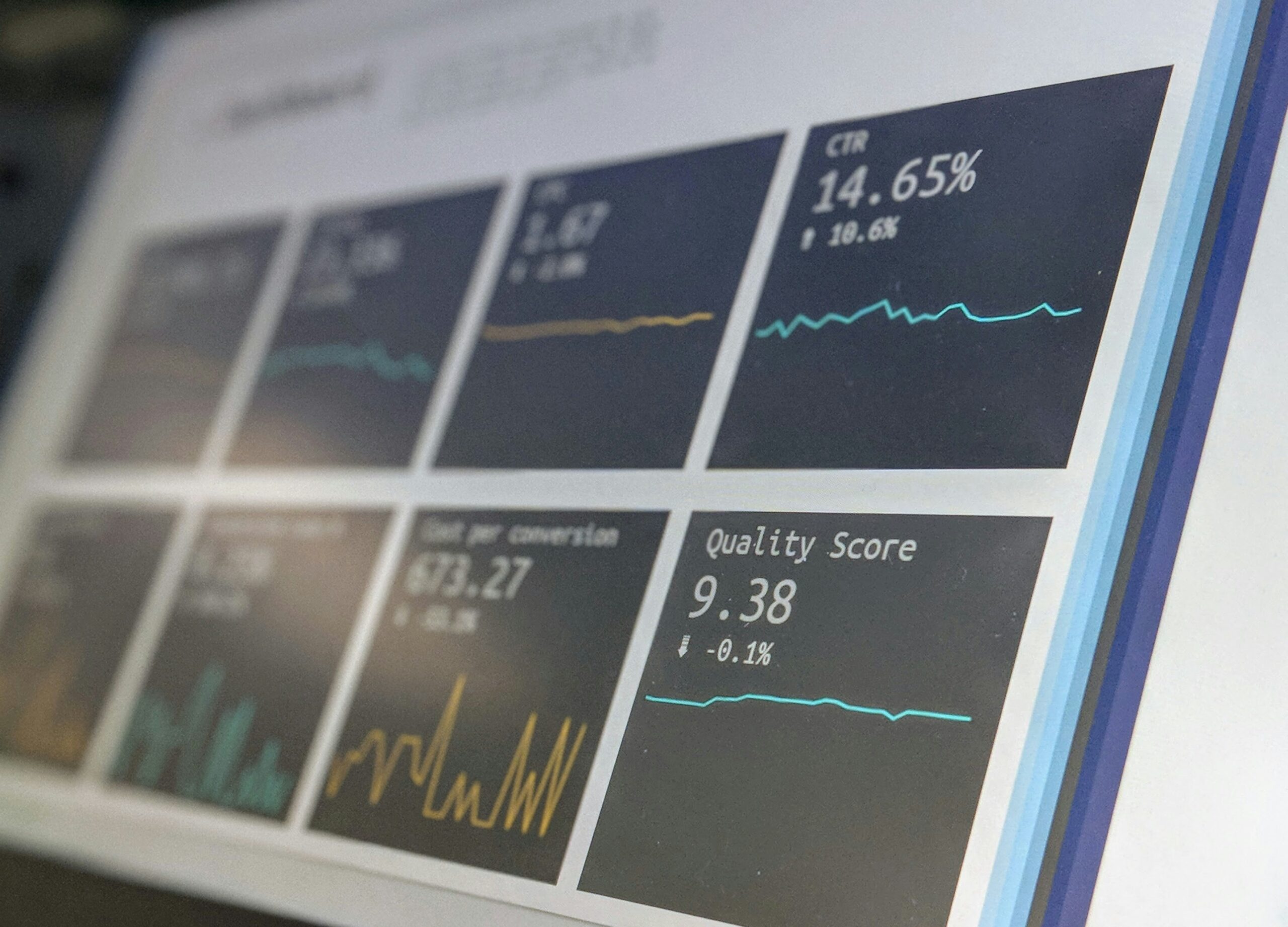Understanding Long-Term Sustainability
Long-term sustainability within the nonprofit sector refers to the capacity of organizations to maintain their operations, achieve desired objectives, and fulfill their missions over an extended period. This concept is paramount for nonprofits and charities, as it directly influences their ability to effect meaningful change within their communities. To grasp the significance of long-term growth, one must consider the multifaceted nature of sustainability, which encompasses financial stability, community engagement, and organizational resilience.
Financial stability is a cornerstone of long-term sustainability. Nonprofits must develop diverse funding streams to ensure ongoing support for their initiatives. Relying solely on grants or donations can create vulnerability; hence, it is essential for nonprofits to cultivate relationships with various funding sources, such as individual donors, corporate sponsors, and foundations. By diversifying income streams, organizations can enhance their financial independence and mitigate the risk of revenue fluctuations, ultimately fostering longevity.
Community engagement is another crucial aspect of sustainability for nonprofits. Building strong connections with community members allows organizations to better understand the needs of those they serve and tailor their programs accordingly. Engaged stakeholders can also become advocates for the cause, amplifying the organization’s reach and impact. Nonprofits should actively seek input from the communities they support and incorporate their feedback into strategic plans, thus ensuring relevance and fostering a sense of ownership among constituents.
Organizational resilience, the ability to adapt and respond to challenges, is vital for long-term growth within the nonprofit sector. By cultivating a robust organizational culture that encourages innovation and flexibility, nonprofits can better navigate external pressures such as economic downturns or shifting social dynamics. Developing systems for effective collaboration, knowledge sharing, and ongoing staff training can contribute to this resilience, enabling organizations to remain effective and sustainable over time.
Assessing Current Organizational Health
Conducting a comprehensive assessment of a nonprofit organization’s current health is crucial for ensuring long-term growth and sustainability. This process involves a multifaceted evaluation that encompasses financial statements, program effectiveness, organizational structure, and staff capacity. By gathering and analyzing relevant data, nonprofits can identify strengths, weaknesses, opportunities, and threats—commonly referred to as a SWOT analysis.
Financial statements serve as a foundational element in this assessment. Reviewing balance sheets, income statements, and cash flow statements provides insights into the fiscal health of the organization. Nonprofits should focus on indicators such as revenue consistency, funding diversity, and expense management. These financial metrics are essential for identifying areas requiring improvement and for making informed decisions that support sustainability over the long term.
In addition to financial analysis, evaluating program effectiveness is critical. Nonprofits must assess whether their programs are meeting their intended goals and serving their target populations effectively. This evaluation can be achieved through collecting performance data, conducting surveys, and gleaning feedback from stakeholders and beneficiaries. Understanding the impact of existing programs not only helps maintain accountability but also enhances strategic planning for future initiatives.
Organizational structure and staff capacity also play a significant role in assessing overall health. Nonprofits should review their governance framework, leadership effectiveness, and staff skill sets. Identifying gaps in capacity or areas with potential for development can facilitate targeted training and resource allocation. It is essential that the organization operates with an efficient structure that promotes collaboration and maximizes impact.
By engaging in this thorough assessment, leaders within the nonprofit sector can gain a clearer understanding of their organization’s current state, which is vital for fostering an environment conducive to long-term growth and sustainability.
Setting Clear and Measurable Goals
Establishing clear and measurable goals is a fundamental step in the strategic planning process for nonprofits aimed at achieving long-term growth and sustainability. Goals serve as the foundation for organizational success, guiding efforts and aligning resources with the nonprofit’s mission and vision. The SMART criteria—Specific, Measurable, Achievable, Relevant, and Time-bound—provide a structured framework for effective goal-setting.
To begin, goals must be specific, clearly articulating what the nonprofit aims to achieve. Instead of broad statements such as “increasing community engagement,” a more specific goal would be “to organize four community events this year targeting underserved populations.” This specificity allows organizations to focus their efforts and resources efficiently.
Next, the goals should be measurable, allowing nonprofits to track progress and outcomes. This can be accomplished by incorporating quantifiable indicators such as the number of participants at an event, funds raised, or new partnerships formed. By establishing measurable goals, nonprofits can assess their effectiveness and make necessary adjustments to their strategies over time.
Moreover, goals must be achievable, striking a balance between ambition and realism. While it is essential to aspire for significant impact, setting unattainable goals can lead to frustration and disillusionment. Therefore, it is prudent for nonprofits to evaluate their existing resources and capabilities when setting these goals.
Additionally, relevant goals should align with the broader objectives and mission of the nonprofit, ensuring that each goal contributes to the long-term sustainability and growth of the organization. Stakeholder involvement is crucial during this phase; engaging board members, staff, and community partners can promote buy-in and collaboration, making goal-setting a collective endeavor.
Finally, time-bound goals introduce a sense of urgency and accountability. Establishing deadlines encourages organizations to stay on track and facilitates the evaluation of progress. By adhering to the SMART criteria, nonprofits can set a robust framework for their goals, setting the stage for effective strategic planning and sustainable growth in their initiatives.
Developing a Diversified Funding Strategy
In the nonprofit sector, developing a diversified funding strategy is essential for achieving long-term growth and sustainability. Reliance on a single source of revenue can expose organizations to financial vulnerabilities, especially during unforeseen circumstances. Nonprofits must explore a multitude of funding sources to create a stable financial foundation that supports their missions and initiatives.
One primary avenue for funding is grants, which can be obtained from government entities, private foundations, and philanthropic organizations. Securing grants often requires a competitive application process, emphasizing the need for a well-crafted proposal that aligns an organization’s work with the funder’s goals. This method not only provides significant resources but can also enhance credibility and attract other funding opportunities.
Individual donations constitute another critical component of a diversified funding approach. By cultivating a strong donor base through effective communication and relationship-building strategies, nonprofits can encourage recurring contributions. Tools such as donor management software can help track donor information and engagement, facilitating tailored outreach efforts that enhance retention and increase overall donations.
Corporate sponsorships can also provide valuable financial support while promoting mutual benefits for both parties. Nonprofits should seek partnerships with businesses aligned with their missions, which can lead to sponsorship deals, employee giving programs, or in-kind donations. Such collaborations can generate publicity and community engagement that further bolster funding efforts.
Lastly, exploring earned income strategies forms a practical way to diversify revenue streams. Nonprofits can consider selling products or services related to their mission, such as educational materials or training programs. This entrepreneurial approach not only creates an additional revenue source but also promotes sustainability by reducing dependency on fluctuating donations or grants.
By incorporating various funding sources into their strategic planning, nonprofits can enhance their financial resilience, ensuring they remain effective and sustainable in their mission-driven work.
Building Strong Community Relationships
In the nonprofit sector, establishing and nurturing strong relationships with community members and stakeholders is fundamental to achieving long-term growth and sustainability. These relationships encourage community support, enhance program participation, and foster a shared sense of ownership among stakeholders. Nonprofits must employ strategic engagement methods to cultivate these crucial connections. One effective strategy is to host community forums where local residents can share their ideas and concerns. This two-way dialogue allows nonprofits to align their goals with the needs of the community, creating a sense of involvement and commitment.
Collaboration with local businesses and organizations is another avenue that can lead to strong community ties. By partnering with other nonprofits, charities, and local enterprises, organizations can leverage shared resources and expertise to amplify their impact. These collaborations might involve joint fundraising efforts, co-hosted events, or exchange programs that benefit the community as a whole. Such partnerships not only broaden the reach of programs but also solidify the nonprofit’s reputation as a community-centered organization.
Moreover, it is essential for nonprofits to recognize and appreciate their supporters. Engagement strategies that include personalized communications, volunteer recognition events, and regular updates about organizational progress can significantly enhance relationships with donors and volunteers. This acknowledges their contributions and reinforces their connection to the mission, paving the way for sustained support. The sense of belonging that comes from being included in the decision-making process and receiving regular feedback fosters a loyal base of stakeholders.
By prioritizing relationship building with community members and stakeholders, nonprofits can develop a robust framework that not only supports immediate needs but also ensures long-term sustainability in their operations. This approach solidifies the foundation for ongoing engagement, making it an essential component for long-term growth in the nonprofit sector.
Leveraging Technology for Efficiency
In an era where technological advancements are rapidly transforming various sectors, non-profits must embrace these innovations to achieve long-term growth and sustainability. By leveraging technology, organizations can streamline operations, enhance their outreach efforts, and improve fundraising strategies, ultimately contributing to their mission-driven goals.
One essential tool for non-profits is donor management systems. These software solutions enable organizations to collect, manage, and analyze data regarding their donors, thus fostering improved relationships and engagement. By consolidating donor information, nonprofits can better understand their supporters’ preferences and behaviors, allowing for more targeted communication and outreach campaigns. This personalized approach enhances donor retention and facilitates sustainable funding streams essential for long-term sustainability.
Additionally, social media engagement has become a vital component of outreach strategies. Platforms like Facebook, Twitter, and Instagram offer non-profits the opportunity to connect with a broader audience, share their mission, and advocate for their causes. By producing compelling content and utilizing technology for targeted ads, these organizations can reach potential supporters more effectively. Social media also serves as a space for building community among donors and beneficiaries, fostering interactions that can lead to long-term support.
Finally, online collaboration tools can significantly improve internal operations within non-profits. With tools such as project management software, cloud storage, and communication platforms, teams can collaborate seamlessly, regardless of location. These technologies enhance productivity, reduce operational costs, and promote a culture of transparency and accountability—key factors that contribute to the sustained effectiveness of charitable organizations.
In conclusion, harnessing the power of technology is paramount for non-profits seeking efficiency and effectiveness. By integrating donor management systems, engaging with social media, and utilizing online collaboration tools, organizations can ensure their operations are aligned with their long-term growth objectives and commitment to sustainability.
Measuring Impact and Success
For non-profits and charities, measuring impact and success is paramount in achieving long term growth and ensuring the sustainability of their programs. Establishing clear metrics and evaluation methods allows organizations to assess their effectiveness, demonstrating accountability and transparency to stakeholders. These metrics can vary widely, encompassing qualitative and quantitative measures that align with an organization’s mission and goals.
One widely recognized approach to measure impact is through the use of key performance indicators (KPIs). These KPIs may include factors such as the number of beneficiaries served, improvement in predetermined outcomes, and the financial health of the organization. Tracking these indicators over time provides insight into whether a charity or nonprofit is on the right path to achieving its long-term objectives. More refined metrics, such as social return on investment (SROI), offer a comprehensive view of the value created by the organization relative to its investment, thus emphasizing sustainability.
Furthermore, adopting frameworks like the Logic Model can help non-profits articulate their goals, inputs, outputs, and outcomes in a structured manner. This visual representation aids in understanding the connection between activities and their intended effect. Surveys, interviews, and focus groups function as robust qualitative methods for evaluating the perceptions of beneficiaries, while also serving to gauge stakeholder satisfaction. This dual approach bolsters evidence of program effectiveness and fosters a culture of continuous improvement.
By consistently measuring impact and success, non-profits can fine-tune their strategies, making informed decisions that enhance their capacities to fulfill their missions. Demonstrating measurable outcomes not only reinforces stakeholder confidence but also strengthens funding opportunities, ultimately contributing to long-term sustainability in the competitive landscape of the nonprofit sector.
Preparing for Change and Challenges
In the nonprofit sector, the landscape is continually evolving, characterized by changes in funding sources, leadership dynamics, and public expectations. Therefore, preparing for these changes is crucial for long-term growth and sustainability. Nonprofits must adopt strategic planning that not only anticipates potential shifts but also equips organizations with the relevant tools to respond effectively to these challenges.
One significant challenge is the fluctuation in funding. Nonprofits often rely on grants, donations, and other financial contributions that can be unpredictable. To mitigate this risk, organizations should diversify their funding sources. This includes exploring partnerships with businesses, securing sponsorships for events, and adopting innovative fundraising strategies. By cultivating a broad base of income streams, nonprofits can enhance their stability and ensure they are well-positioned for long-term sustainability.
Another challenge involves leadership transitions. Changes in leadership can disrupt organizational culture and strategic direction. To address this issue, nonprofits should create comprehensive succession plans that outline processes for identifying and training potential leaders. Involving diverse stakeholders in the planning process—including board members, staff, and volunteers—can facilitate smoother transitions and maintain continuity in mission-driven work.
Moreover, responding to public demand and societal shifts is integral to the long-term growth of a nonprofit. Regularly assessing community needs allows organizations to stay relevant and effectively address emerging issues. Implementing feedback mechanisms, such as surveys or community forums, can ensure that the voices of beneficiaries are heard, enabling nonprofits to adapt their services and strategies accordingly.
In conclusion, the ability to prepare for and navigate change is fundamental to the success of nonprofit organizations. By embracing adaptability and resilience in their strategic planning, charities can not only survive challenges but thrive, contributing to a sustainable future.
Creating a Sustainable Action Plan
Developing a sustainable action plan for nonprofits is essential for ensuring long-term growth and sustainability. This plan serves as a roadmap, outlining the objectives and tasks necessary to maintain operations and fulfill the organization’s mission. To begin, nonprofits should gather insights and relevant information from past evaluations and stakeholder feedback, which will inform the planning process.
The first step in creating this comprehensive action plan is to establish clear goals that align with the organization’s mission. These goals should focus on enhancing sustainability across various areas, including fundraising, program development, community engagement, and resource management. By defining priorities, nonprofits can devote their resources effectively and measure progress over time.
Next, it is crucial to outline specific actions that will help achieve these goals. This may involve developing new programs, enhancing existing services, diversifying funding sources, or building partnerships with other charities. Each action item should have defined outcomes to gauge success, making it easier for nonprofit leaders to track progress toward long-term growth and sustainability.
Timeline is a critical component of the action plan. Establishing realistic deadlines for each action item fosters accountability and keeps the team focused on their objectives. Timelines also allow organizations to be adaptable, as they can adjust the plan based on shifting circumstances or challenges that may arise in the nonprofit landscape.
Designating responsibilities among team members is another vital element. Identifying who will lead each action item fosters ownership and ensures that tasks are completed efficiently. Regular check-ins can further encourage collaboration and allow nonprofits to respond to any unforeseen obstacles promptly.
In conclusion, a well-crafted sustainable action plan is fundamental for nonprofits aiming for long-term growth. By combining effective goal-setting, defined actions, and cooperative timelines, charities can establish a pragmatic framework that supports their mission and enhances their impact within the community.




